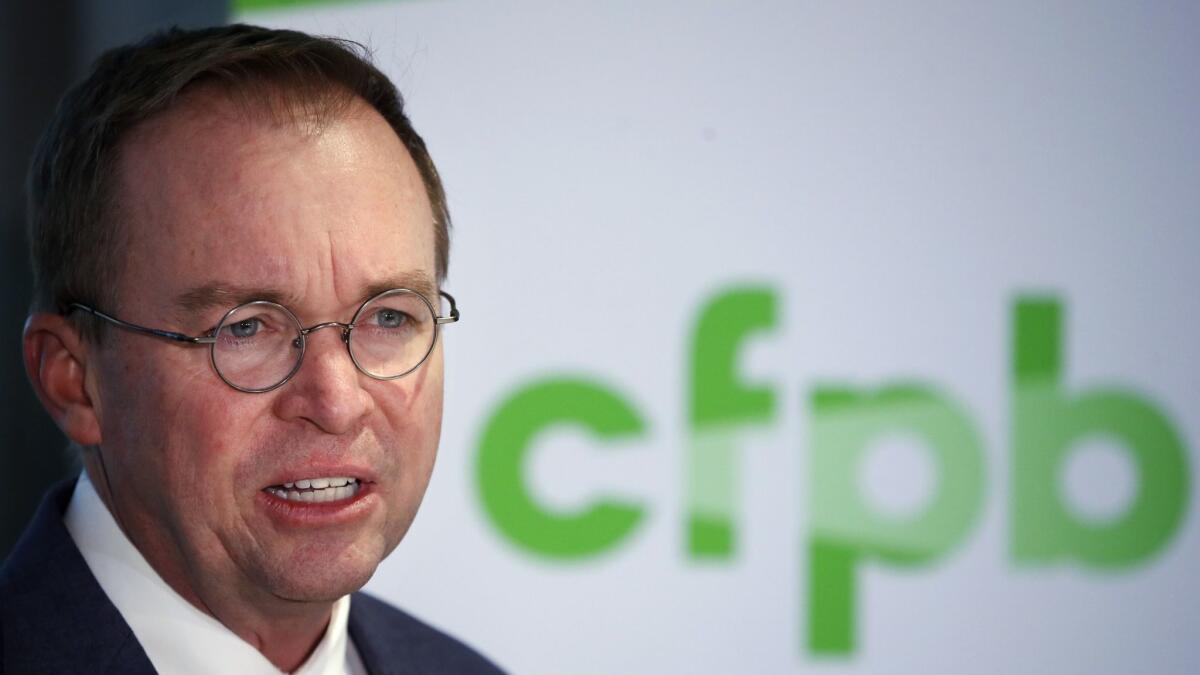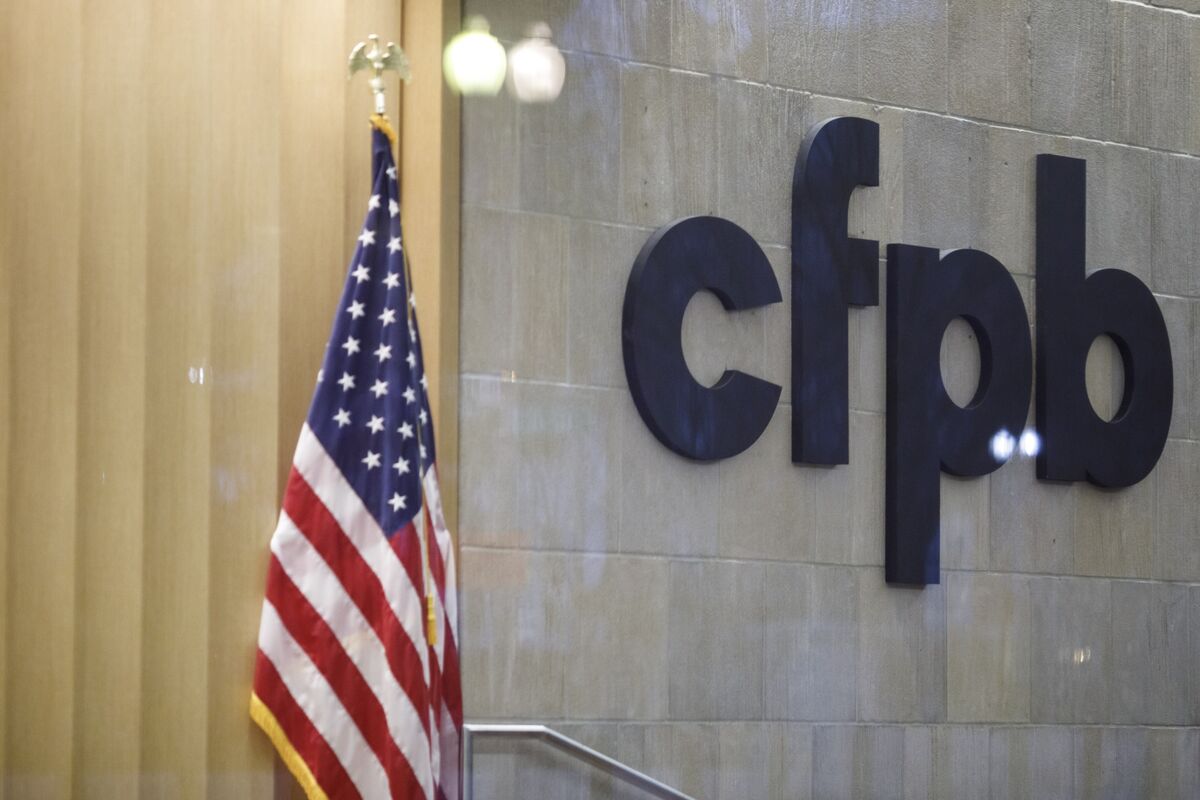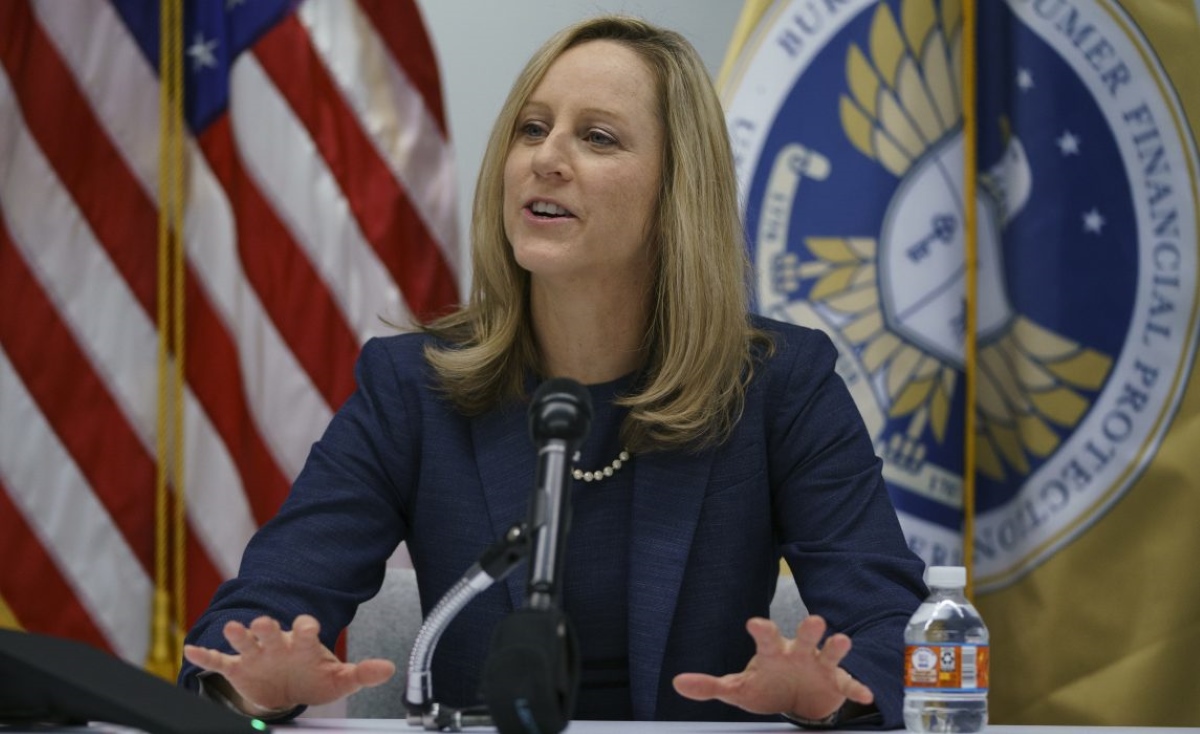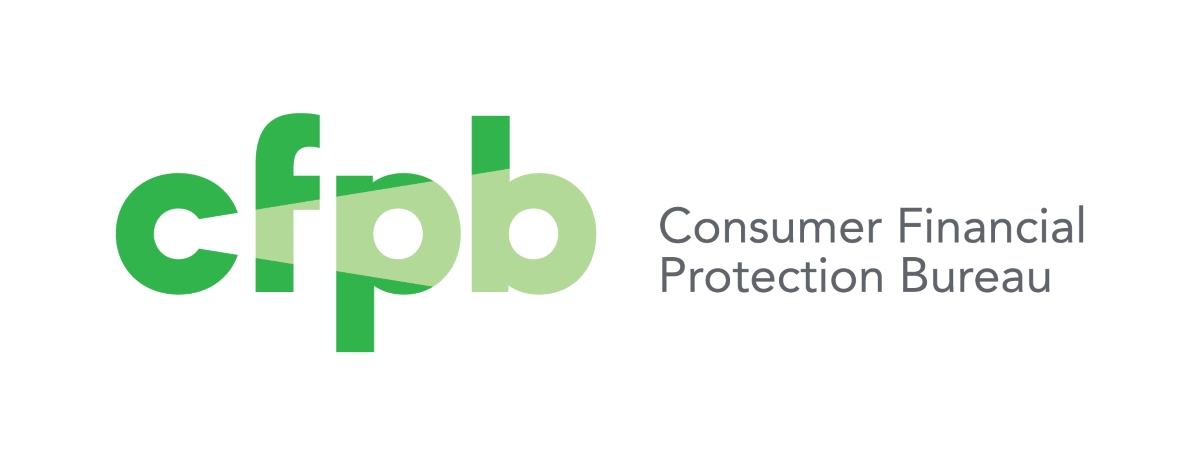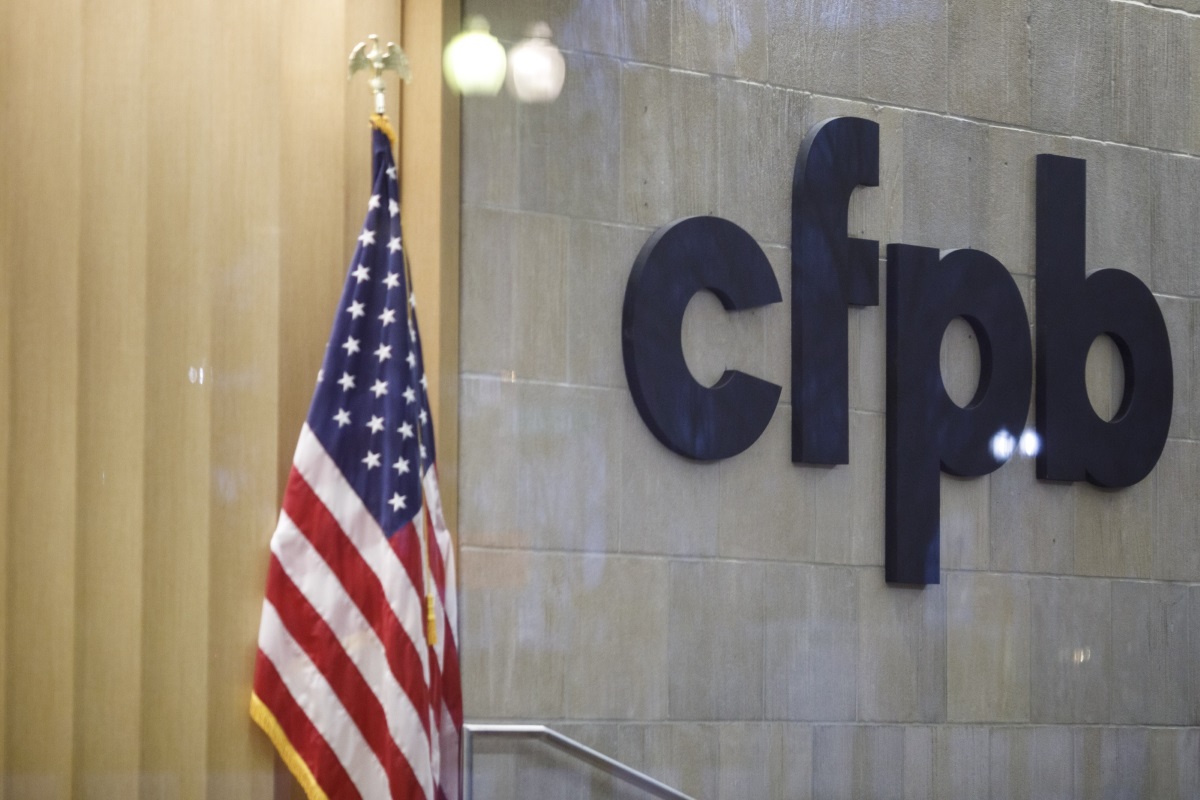Home>Finance>When Was The Consumer Finance Protection Bureau Created
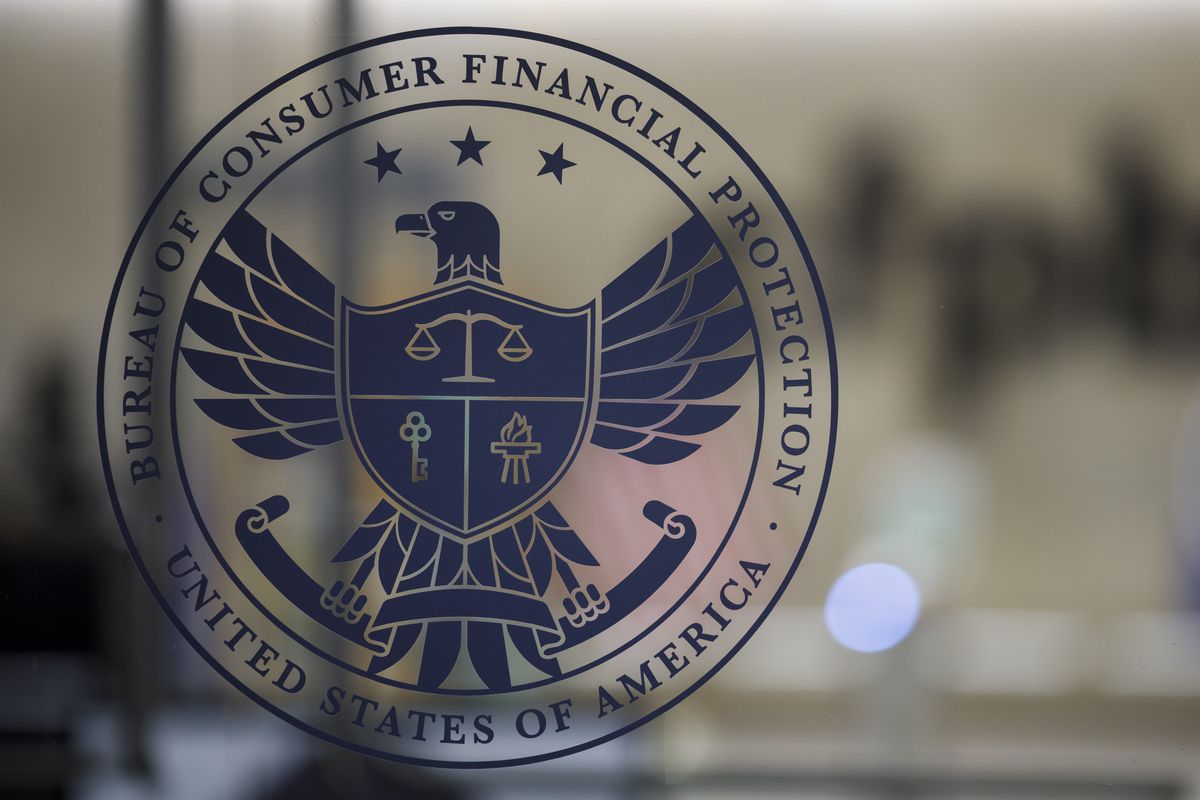

Finance
When Was The Consumer Finance Protection Bureau Created
Modified: March 1, 2024
Discover the history of the Consumer Finance Protection Bureau (CFPB) and learn when it was created. Explore the role of finance in consumer protection and regulation.
(Many of the links in this article redirect to a specific reviewed product. Your purchase of these products through affiliate links helps to generate commission for LiveWell, at no extra cost. Learn more)
Table of Contents
- Introduction
- The Need for Consumer Financial Protection
- The Creation of the Consumer Financial Protection Bureau (CFPB)
- The Dodd-Frank Wall Street Reform and Consumer Protection Act
- Establishment of the CFPB
- Leadership and Structure of the CFPB
- Objectives and Responsibilities of the CFPB
- Achievements and Impact of the CFPB
- Criticisms and Controversies Surrounding the CFPB
- Conclusion
Introduction
The Consumer Financial Protection Bureau (CFPB) is an independent agency of the United States government that serves as a watchdog for consumer financial products and services. It was established with the primary objective of protecting consumers from unfair, deceptive, and abusive practices in the financial industry.
In the wake of the 2008 global financial crisis, there was a growing recognition of the need for increased regulation and oversight in the financial sector. Many consumers had been heavily impacted by predatory lending practices, complex financial products, and deceptive marketing tactics. As a result, there was a call for a dedicated agency that would have the authority and resources to address these issues and promote transparency, fairness, and consumer empowerment.
The creation of the CFPB was a consequential step towards achieving these goals. Through its regulatory and supervisory powers, the bureau aims to ensure that consumers have access to fair and transparent financial markets, while holding financial institutions accountable for their actions.
In this article, we will delve into the history of the CFPB, the legislation that led to its creation, its structure and objectives, as well as its impact on consumers and the financial industry. We will also explore some of the criticisms and controversies surrounding the bureau, providing a comprehensive overview of this influential regulatory body.
The Need for Consumer Financial Protection
Consumer financial protection is a critical aspect of maintaining a fair and stable economy. Prior to the establishment of the CFPB, consumers faced numerous challenges and vulnerabilities in their interactions with financial institutions.
One of the main drivers behind the need for consumer financial protection was the prevalence of predatory lending practices. Many consumers were lured into loans with deceptive terms and unfavorable conditions, resulting in a wave of foreclosures and financial distress during the housing market collapse. These practices disproportionately affected marginalized communities and low-income households.
Additionally, the financial industry had become increasingly complex, with a wide range of products and services available to consumers. This complexity made it challenging for individuals to fully understand the terms and risks associated with financial products such as mortgages, credit cards, and student loans. As a result, consumers were often taken advantage of by financial institutions that used confusing or misleading tactics to sell their products.
Furthermore, the lack of transparency in the financial industry made it difficult for consumers to make informed decisions. Many financial products contained hidden fees, excessive interest rates, and unfair contract terms. Consumers were often unaware of these hidden costs until it was too late, leading to financial hardship.
The need for consumer financial protection was also underscored by the rapid growth of online lending platforms and digital financial services. While these technological advancements provided convenience and access to financial services, they also gave rise to new risks and challenges. Many consumers found themselves vulnerable to data breaches, identity theft, and questionable business practices.
Overall, the lack of regulatory oversight and consumer protection in the financial industry had dire consequences for many individuals and the overall stability of the economy. The creation of the CFPB aimed to address these issues by providing a dedicated agency with the authority and resources to safeguard consumers’ interests and promote fairness and transparency in the financial marketplace.
The Creation of the Consumer Financial Protection Bureau (CFPB)
The Consumer Financial Protection Bureau (CFPB) was created as part of the Dodd-Frank Wall Street Reform and Consumer Protection Act, which was signed into law by President Barack Obama on July 21, 2010. The legislation aimed to address the regulatory gaps and shortcomings in the financial system that had led to the 2008 financial crisis.
The Dodd-Frank Act was a comprehensive financial reform package that introduced various measures to promote financial stability and protect consumers. One of the key provisions of the act was the establishment of the CFPB as a central authority dedicated to consumer financial protection.
Under the Dodd-Frank Act, the CFPB was designed to be an independent agency within the Federal Reserve System. It was granted broad regulatory and supervisory powers over financial institutions, including banks, credit unions, mortgage lenders, payday lenders, and other providers of consumer financial products and services.
The creation of the CFPB was driven by the recognition that existing regulatory agencies did not have sufficient authority or focus on consumer protection. Prior to the CFPB, consumer financial protection was fragmented and spread across multiple agencies, leading to inefficiencies and gaps in oversight.
The CFPB was given the authority to enforce consumer protection laws, conduct examinations of financial institutions, and engage in rulemaking to address unfair, deceptive, and abusive practices. It was also tasked with ensuring that consumers had access to clear and accurate information about financial products and services.
One of the unique features of the CFPB is its focus on empowering consumers through financial education and outreach programs. The bureau has developed initiatives to promote financial literacy and provide resources for consumers to make informed financial decisions.
Overall, the creation of the CFPB marked a significant shift in how consumer financial protection was approached in the United States. It consolidated authority in a single agency, giving it the necessary tools and independence to prioritize and advance consumer interests in the financial industry.
The Dodd-Frank Wall Street Reform and Consumer Protection Act
The Dodd-Frank Wall Street Reform and Consumer Protection Act, commonly referred to as Dodd-Frank Act, is a landmark piece of legislation passed by the United States Congress in response to the 2008 financial crisis. It introduced comprehensive reforms to the financial industry with the aim of promoting stability, protecting consumers, and addressing the systemic risks that led to the collapse of financial institutions.
The Dodd-Frank Act was signed into law by President Barack Obama on July 21, 2010. It encompasses a wide range of provisions that touch upon various aspects of the financial system, including banking regulations, derivatives trading, investor protections, and consumer financial protection.
One of the key objectives of the Dodd-Frank Act was to enhance transparency and accountability in the financial sector. It introduced stricter regulatory requirements for financial institutions, such as large banks and investment firms, to prevent excessive risk-taking and address the “too big to fail” problem.
Another important aspect of the Dodd-Frank Act is its focus on consumer financial protection. It created the Consumer Financial Protection Bureau (CFPB) as a dedicated agency with the authority to regulate and supervise financial products and services offered to consumers. The CFPB was designed to ensure that consumers were protected from unfair, deceptive, and abusive practices in the financial marketplace.
Furthermore, the Dodd-Frank Act established the Financial Stability Oversight Council (FSOC), a body composed of various financial regulators and chaired by the Treasury Secretary. The FSOC was tasked with monitoring and addressing systemic risks in the financial system to prevent future crises.
The Dodd-Frank Act also introduced significant reforms to the derivatives market, aiming to increase transparency and reduce the risk associated with these complex financial instruments. It mandated the clearing and exchange trading of standardized derivatives, as well as the registration and regulation of swap dealers and major participants in the derivatives market.
Additionally, the Dodd-Frank Act included provisions to protect investors and improve corporate governance. It enhanced oversight of credit rating agencies, established new fiduciary standards for financial professionals providing investment advice, and increased transparency and accountability in executive compensation practices.
Since its enactment, the Dodd-Frank Act has had a profound impact on the financial industry and consumer protection. Its provisions have led to significant changes in the way financial institutions operate, improving transparency, and reducing the potential for systemic risks. The establishment of the CFPB has provided consumers with a dedicated advocate for their financial interests, helping to level the playing field and hold financial institutions accountable.
Establishment of the CFPB
The establishment of the Consumer Financial Protection Bureau (CFPB) under the Dodd-Frank Wall Street Reform and Consumer Protection Act marked a significant milestone in the history of consumer financial protection. The creation of the CFPB was driven by the need to centralize and strengthen regulatory oversight in the financial industry, specifically in protecting consumers from abusive and deceptive practices.
Prior to the CFPB, consumer protection in the financial sector was scattered among various agencies, leading to fragmented regulation and limited enforcement capabilities. The CFPB was established to consolidate these responsibilities into a single agency with the primary focus of safeguarding consumer interests.
When the Dodd-Frank Act was signed into law in July 2010, it outlined the framework for the CFPB’s creation. However, the bureau did not become operational immediately. Its establishment involved a series of constitutional and legal debates, as well as the nomination and confirmation of its leadership.
Elizabeth Warren, then a Harvard Law School professor and consumer advocate, played a crucial role in shaping the concept and design of the CFPB. Initially proposed as a standalone agency, the CFPB was eventually placed within the Federal Reserve System to ensure its independence and access to funding.
In 2011, President Barack Obama nominated Richard Cordray, the former Attorney General of Ohio, as the first director of the CFPB. However, his appointment faced significant opposition in Congress, leading to a lengthy confirmation process. Cordray eventually assumed the role in January 2012.
The CFPB began its operations in stages, gradually building its staff and infrastructure. It started by assuming responsibility for consumer protection and enforcement from existing agencies, such as the Federal Trade Commission (FTC) and the Office of the Comptroller of the Currency (OCC).
Throughout its establishment, the CFPB faced legal challenges and criticism from various stakeholders. Some argued that the bureau lacked sufficient accountability and transparency, while others contended that it had excessive regulatory power that could stifle innovation and economic growth.
Despite these challenges, the CFPB steadily grew as an influential regulatory agency. It expanded its oversight to include mortgage lenders, credit card issuers, payday lenders, debt collectors, and other financial service providers. The bureau also developed a robust consumer complaint database, enabling individuals to report and seek assistance with financial problems.
Overall, the establishment of the CFPB represented a significant step toward strengthening consumer financial protection. By bringing together regulatory authority and expertise, the CFPB aimed to level the playing field between consumers and financial institutions and ensure fair and transparent practices in the financial marketplace.
Leadership and Structure of the CFPB
The Consumer Financial Protection Bureau (CFPB) operates under a leadership structure that is designed to ensure objective decision-making and promote the agency’s mission of consumer financial protection. The CFPB’s structure consists of a Director, an Advisory Board, and various divisions and offices.
The Director of the CFPB is appointed by the President of the United States and confirmed by the Senate. The Director serves a five-year term and has significant decision-making authority over the bureau’s activities. The Director is responsible for setting the agency’s strategic priorities, enforcing consumer protection laws, and overseeing rulemaking and enforcement actions.
The Advisory Board, known as the Consumer Advisory Board (CAB), consists of experts from various backgrounds, including consumer advocacy, academia, and industry. The CAB provides insights and recommendations to the CFPB on consumer financial issues, helping to guide the bureau’s policies and initiatives. The board members serve staggered three-year terms and meet several times a year to discuss consumer protection matters.
Within the CFPB, there are several divisions and offices responsible for specific areas of focus and expertise. These include the Division of Supervision, Enforcement, and Fair Lending, which conducts examinations and investigations to ensure compliance with consumer protection laws; the Office of Innovation, which promotes responsible innovation in consumer financial products and services; and the Office of Financial Education, which focuses on improving financial literacy among consumers.
Additionally, the CFPB has regional offices located throughout the United States, allowing for closer proximity to consumer markets and facilitating the bureau’s outreach efforts. These regional offices work alongside the headquarters in Washington, D.C., to ensure a comprehensive and localized approach to consumer financial protection.
The structure of the CFPB is designed to foster independence in decision-making while also ensuring transparency and accountability. The Director, subject to Senate confirmation, is empowered to lead the bureau and make important policy decisions. The Advisory Board provides a platform for diverse perspectives and input from stakeholders. The divisions and offices within the CFPB work collaboratively to carry out the agency’s mission and achieve its objectives.
It is worth noting that the leadership and structure of the CFPB have been subject to debate and scrutiny since its establishment. Some have argued for changes to the bureau’s structure, such as converting it into a bipartisan commission, to provide broader representation and guard against potential overreach. Others have advocated for streamlining the bureau’s authority and increasing oversight, citing concerns over the potential for regulatory excess.
Overall, the leadership and structure of the CFPB play a crucial role in guiding the agency’s activities and ensuring its effectiveness in protecting consumers in the financial marketplace. By fostering expertise, collaboration, and accountability, the CFPB aims to promote transparency, fairness, and responsible behavior within the financial industry.
Objectives and Responsibilities of the CFPB
The Consumer Financial Protection Bureau (CFPB) was created with a clear set of objectives and responsibilities aimed at safeguarding consumers in the financial marketplace. The bureau’s primary mission is to protect consumers from unfair, deceptive, and abusive practices while promoting transparency and innovation in the consumer finance industry.
One of the key objectives of the CFPB is to ensure that consumers have access to clear and accurate information about financial products and services. The bureau works to create and enforce regulations that require financial institutions to disclose important terms, fees, and risks in a transparent and understandable manner. By doing so, the CFPB empowers consumers to make informed decisions and avoid potential financial pitfalls.
The CFPB is also responsible for enforcing federal consumer financial laws and regulations. It has the authority to take legal action against financial institutions that engage in unfair, deceptive, or abusive practices. Through their enforcement actions, the bureau aims to hold accountable those who violate consumer protection laws and seek remedies for affected consumers.
Another significant responsibility of the CFPB is conducting supervision and examinations of financial institutions. The bureau has the authority to examine banks, credit unions, mortgage lenders, payday lenders, and other financial service providers to ensure compliance with consumer protection laws. This supervision helps to identify and address potential risks and misconduct that could harm consumers.
The CFPB also places a strong emphasis on consumer financial education and empowerment. The bureau works to provide resources, tools, and educational materials to help consumers make sound financial decisions. Through its initiatives, the CFPB aims to improve financial literacy and ensure that consumers have the knowledge and skills to navigate the complex financial landscape.
Additionally, the CFPB plays an important role in monitoring and responding to consumer complaints. The bureau maintains a comprehensive and publicly accessible database of consumer complaints about financial products and services. This information helps to identify trends and potential issues in the marketplace, allowing the CFPB to take appropriate action to address consumer concerns.
Overall, the objectives and responsibilities of the CFPB revolve around protecting consumers, promoting transparency, and holding financial institutions accountable for their actions. By focusing on these priorities, the bureau works towards creating a fair and equitable financial marketplace that benefits all consumers.
Achievements and Impact of the CFPB
Since its establishment, the Consumer Financial Protection Bureau (CFPB) has made significant achievements in promoting consumer financial protection and enforcing fair practices in the financial industry. The bureau’s efforts have had a profound impact on both individual consumers and the overall financial marketplace.
One of the notable achievements of the CFPB is its enforcement actions against financial institutions that engage in unfair, deceptive, or abusive practices. The bureau has secured billions of dollars in restitution and penalties for consumers who have been harmed by unethical behavior. These enforcement actions have served as a deterrent to such practices, sending a strong message that consumer protection is a priority.
The CFPB has also implemented regulations and reforms to promote transparency and prevent predatory practices in certain financial sectors. For example, the bureau’s regulations on mortgage lending have helped to establish stronger consumer protections, ensuring that borrowers have access to clear and accurate information about loan terms and costs. This has helped to prevent predatory lending practices and reduce the risk of another housing market collapse.
Consumer complaints play a vital role in the CFPB’s work, allowing the bureau to identify patterns of misconduct and take appropriate action. The CFPB has handled millions of consumer complaints, resulting in investigations and resolutions that have provided relief to affected individuals. Through its complaint database, the bureau has been able to highlight common issues and advocate for reforms that benefit consumers.
Additionally, the CFPB has played a pivotal role in promoting financial education and literacy. The bureau has developed educational resources and tools to help consumers make informed financial decisions. By empowering individuals with knowledge and skills, the CFPB seeks to level the playing field and enhance consumer decision-making in the complex world of personal finance.
The impact of the CFPB is not limited to direct consumer protection. The bureau’s regulatory initiatives and guidance have had a ripple effect, encouraging financial institutions to adopt fairer practices. Many institutions have revised their policies and procedures to comply with CFPB regulations and avoid potential penalties, leading to a more responsible and consumer-centric approach to business in the financial industry.
Furthermore, the CFPB’s work has influenced the larger national conversation around consumer financial protection. By highlighting issues and advocating for reforms, the bureau has brought attention to the importance of safeguarding consumers from predatory practices and promoting fairness and transparency in the marketplace.
Despite its achievements, the CFPB has faced criticism and challenges from various quarters. Critics argue that the bureau lacks sufficient oversight and accountability, while industry representatives have expressed concerns about the potential for regulatory overreach. However, many consumer advocates and individuals affected by the bureau’s actions view the CFPB as an essential champion for their rights and interests.
In summary, the achievements and impact of the CFPB are significant in terms of consumer protection, enforcement, and regulatory reforms. The bureau’s efforts have helped to level the playing field between consumers and financial institutions, making the financial marketplace fairer, more transparent, and better equipped to serve the needs of all individuals.
Criticisms and Controversies Surrounding the CFPB
The Consumer Financial Protection Bureau (CFPB) has been subject to various criticisms and controversies since its establishment, with concerns raised by industry stakeholders and some policymakers. While the bureau has been widely praised for its consumer protection efforts, the following are some of the criticisms that have been leveled against it.
One key criticism centers around the perceived lack of oversight and accountability of the CFPB. Unlike other regulatory agencies, the CFPB is led by a single director who has broad authority to make decisions and implement regulations without the traditional checks and balances provided by a multi-member commission or board. Critics argue that this concentration of power in a single individual undermines transparency and democratic accountability.
Another contentious issue is the CFPB’s rulemaking and enforcement activities. Critics argue that the bureau’s regulations can place burdensome compliance requirements on financial institutions, particularly smaller community banks and credit unions, leading to increased costs and stifled innovation. Some argue that the CFPB’s actions have adversely impacted access to credit, particularly for underserved communities.
Additionally, the CFPB has faced legal challenges regarding the constitutionality of its leadership structure. Critics have argued that the bureau’s single-director leadership, with limited oversight from other branches of government, violates the constitutional principles of checks and balances. These legal challenges have sparked debates about the proper balance of power and accountability within the regulatory framework.
The CFPB has also faced criticism for its handling of consumer complaints. Some argue that the bureau’s complaint database, while useful in identifying trends, can be misleading and result in unfair reputational damage for financial institutions. Critics suggest that greater efforts should be made to ensure the accuracy and legitimacy of complaints before they are made public.
Differing viewpoints also exist regarding the scope and reach of the CFPB’s authority. Some argue that the bureau’s jurisdiction extends beyond its intended mandate, encroaching on the regulatory responsibilities of other agencies. This has led to concerns over regulatory overlap and potential duplication of efforts.
Lastly, the CFPB has been criticized for its perceived lack of transparency in its decision-making processes. Some argue that the bureau’s activities lack the necessary input and feedback from affected stakeholders, limiting the opportunity for alternative perspectives to be considered. Critics contend that greater transparency would enhance accountability and help address concerns about potential regulatory overreach.
It is important to note that while the CFPB has faced criticisms and controversies, it has also garnered strong support from consumer advocacy groups and individuals who appreciate its efforts to protect consumers from abusive financial practices. The ongoing debates and discussions surrounding the CFPB highlight the complex nature of consumer financial protection and the challenges of finding the right balance between regulation, innovation, and accountability.
Conclusion
The creation of the Consumer Financial Protection Bureau (CFPB) under the Dodd-Frank Act marked a significant milestone in the realm of consumer financial protection. The CFPB was established to address the regulatory gaps and protect consumers from unfair, deceptive, and abusive practices in the financial industry.
Since its inception, the CFPB has made notable achievements in promoting transparency, enforcing consumer protection laws, and holding financial institutions accountable. It has secured financial restitution for consumers, implemented regulations to prevent predatory practices, and provided educational resources to empower individuals to make informed financial decisions.
However, the CFPB has also faced criticisms and controversy. Concerns about its leadership structure, lack of oversight, potential regulatory excess, and perceived lack of transparency have sparked ongoing debates and legal challenges.
Nevertheless, it is important to acknowledge the positive impact and advancements brought about by the CFPB. It has strengthened consumer financial protection laws, improved disclosure requirements, and heightened awareness about the importance of fair and transparent practices in the financial marketplace.
The CFPB’s focus on consumer complaints and its role in investigating and resolving issues has provided a platform for individuals to seek assistance and hold financial institutions accountable. The bureau’s enforcement actions have served as a deterrent and sent a clear message that unethical practices will not be tolerated.
Furthermore, the creation of the CFPB has elevated the importance of consumer financial protection in the national discourse. It has raised awareness about the rights and needs of consumers, incentivized financial institutions to adopt fairer practices, and compelled the industry to prioritize consumer well-being.
As the CFPB continues its work, it is crucial to strike a balance between protecting consumers and fostering innovation and economic growth. Addressing the concerns raised by critics and ensuring transparency and accountability in its operations will be essential for the bureau’s long-term effectiveness and public trust.
In conclusion, the Consumer Financial Protection Bureau plays a vital role in safeguarding consumers’ interests and promoting fairness in the financial marketplace. Its achievements in enforcement, rulemaking, and education have had tangible benefits for individuals and the overall stability of the economy. By navigating the challenges and addressing criticisms, the CFPB can further strengthen its position as a champion for consumers and a driver for positive change in the financial industry.
